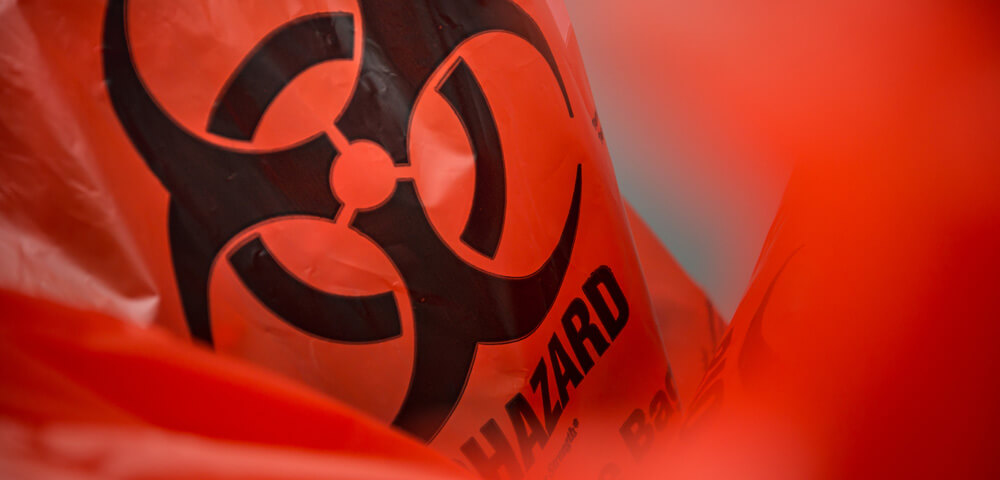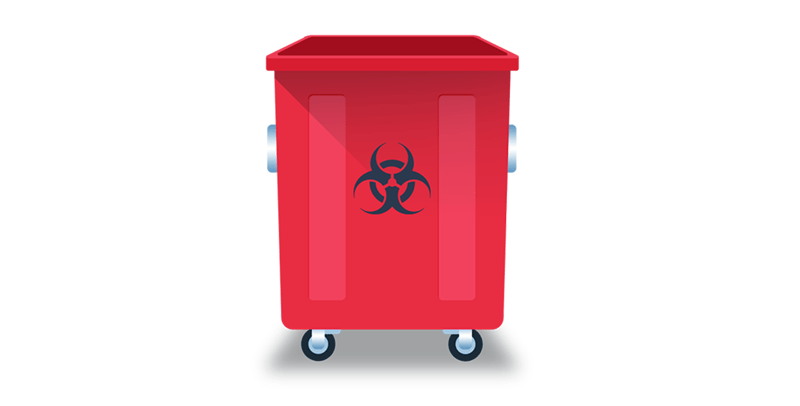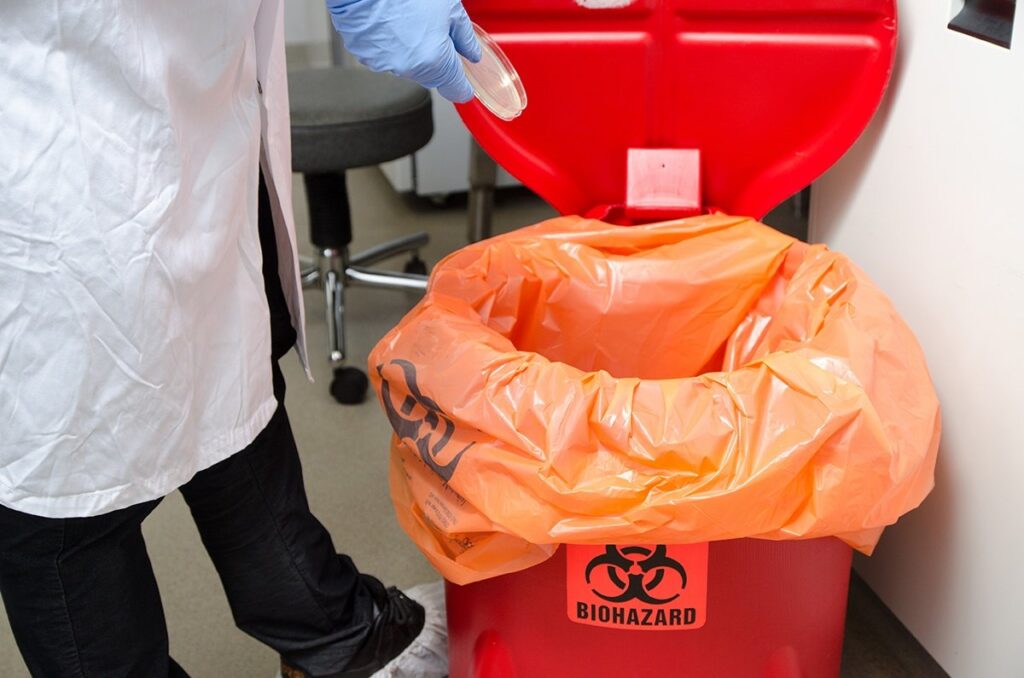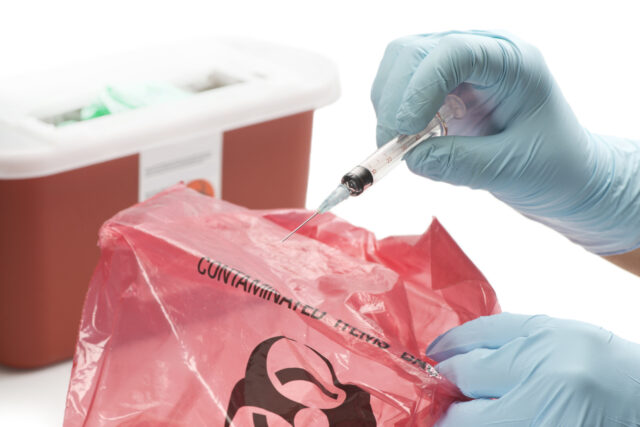The proper management of biohazardous waste is critical to protect the health and safety of personnel, patients, the public, and the environment from potentially hazardous materials; hence it is crucial for healthcare facilities and other organizations that generate such waste to be aware of the laws governing its management.
This guide will provide an overview of how to safely manage biohazardous waste in compliance with applicable laws.
Regulations and Guidelines
Safe medical waste management is a top priority for healthcare providers and laboratories. All types of biohazardous waste, from medical sharps such as needles to lab cultures and materials, must be managed in line with local and federal regulations in order to protect public health and the environment. In addition, healthcare providers must also adhere to standards set by The Joint Commission in order to qualify for accreditation.
In this guide, we will go over the regulations and guidelines that need to be followed when managing it. We will start by discussing the types of material considered biohazardous, then move on to the different classes of waste designated by the United States Environmental Protection Agency (EPA) as well as standard safety protocols related to storage, labeling, transport, disposal, and other important topics. After reading this guide you should have a clear understanding of how your facility can comply with regulations related to managing biohazardous waste.
Identification and Segregation

Also referred to as “biohazard” or “medical” waste, is any material that is contaminated with a potentially infectious agent that may cause illness or injury. This type of waste requires special handling and disposal protocols to protect the safety of people and the environment. Proper identification and segregation are two essential steps in the process of responsibly managing biohazardous waste.
Identifying biohazardous material is crucial for proper segregation and disposal. To begin, it is helpful to note any special warnings such as pictograms, color-coding systems, or labels that are placed on containers. Additionally, you should inspect all biohazardous materials to assess potential risk levels before handling them further.
All packaging should be opened and inspected for visible evidence of contamination with biohazards such as bodily fluids. Any hazardous material must be segregated by type in order to determine an appropriate disposal route later in the process.
Segregation can be accomplished by looking closely at each item being discarded and determining if it has been contaminated with hazardous materials such as blood or tissue products, pharmaceuticals/medicines, etc.
Containers used for holding waste should be labeled clearly with a visible warning sign indicating what type of hazardous materials are contained within them so that technicians can safely handle the containers without accidental exposure.
When complete, all waste containers must then be collected from the site using appropriate protective equipment to ensure absolute safety for those involved in its transport and eventual disposal process downstream into regulated facilities for responsible treatment or destruction according to human health & environmental standards.
Storage and Transportation

Securely storing and transporting biohazardous waste is essential to ensure it does not reach the environment and causes harm to people and animals. It is important to understand the appropriate measures for properly handling, storing, and transporting biohazardous waste.
Storage: It should be stored in a secure indoor area away from direct sunlight or heavy traffic. The containment of the storage must be leak-proof and sufficiently strong to prevent any escape of wastes, either through cracking or from the movement of the containers.
To ensure safety, storage areas must also be equipped with appropriate safety equipment such as spill barriers, absorbents, personal protection equipment, fire extinguishers, eyewash stations, etc., as needed. Furthermore, use only approved containers in acceptable colors (usually red) that are labeled with biohazard labels – this makes them easily recognizable and ensures that workers can identify them at a glance.
Transportation: It must be transported carefully following all applicable rules and regulations as well as standards established by governing bodies where they exist. Suitable transport containers should be used capable of preventing leakage during transportation.
Transport vehicles must also comply with applicable rules (including placarding their vehicles if required). Personnel involved in transporting must also receive proper training on proper handling techniques for loading, unloading, and securing cargo before transportation can take place.
All drivers transporting hazardous materials shall obtain special qualifications for it which include obtaining certification ratings issued by their respective states/countries’ department of transportation licensing boards according to the DOT classification system.
Finally, it is important to verify all manifests with regards to each containment shipment prior to taking off on their routes so that they are able to identify items they may transport during their course of work throughout their route journey in the event an emergency occurs rending help or assistance necessary.
Disposal of Biohazardous Waste

It could be anything from needles and sharps used in hospitals to hazardous medical products that are used for research.
In addition to ensuring that biohazard materials are kept separately from non-infectious materials, employers should also develop policies that include a range of safety measures such as:
- Properly labeling containers appropriately;
- Storing biohazardous materials in dedicated areas away from other types of contaminants;
- Cleaning up spills promptly;
- Wearing protective equipment such as gloves and face shields where appropriate;
- Training employees on safe disposal practices; and
- Periodical inspection and monitoring to ensure compliance with regulations.
Regulated medical waste (RMW) must be collected by an authorized hazardous-waste removal service provider. These services typically accept RMW just before or after designated collection periods so they can track which facility generated which items.
They must also meet stringent EPA guidelines regarding proper packaging, transport, and disposal processes – package laundering methods must be documented upon request – including notification procedures so if hazardous materials spill during transport they can be reported immediately.
Conclusion
Lastly, proper management is an important part of preserving human health and the environment. Following these simple steps can help ensure that any biohazardous waste is managed safely and responsibly in order to reduce the risks of exposure to biological threat agents.
The keys to properly managing biohazardous waste are identifying it and separating it from other types of waste. It should then be placed in a durable, leak-proof, appropriately labeled container before being disposed of at a registered disposal facility or permitted incinerator or land treatment facility.
Lastly, all personnel handling biohazardous material should properly utilize personal protective equipment and maintain good hygiene practices when working with or near potentially hazardous material.




